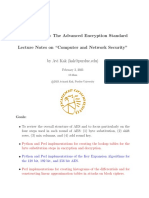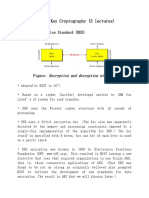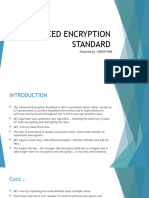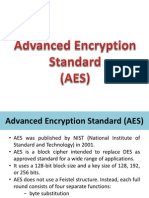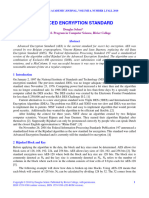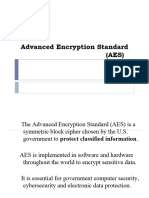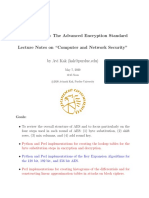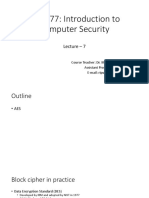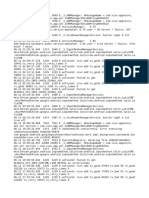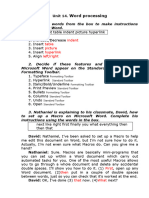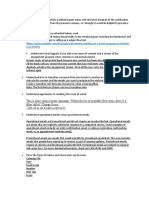0% found this document useful (0 votes)
45 views37 pagesAES Lecturenotes
The Advanced Encryption Standard (AES) is a fast and secure form of encryption that has become the global standard. AES was developed to replace the aging Data Encryption Standard (DES) and chosen by the National Institute of Standards and Technology (NIST) in 2001 after a lengthy selection process. AES works by encrypting data in blocks through multiple rounds of substitution, shifting, mixing, and adding round keys derived from the original encryption key.
Uploaded by
Apdale YareCopyright
© © All Rights Reserved
We take content rights seriously. If you suspect this is your content, claim it here.
Available Formats
Download as PPTX, PDF, TXT or read online on Scribd
0% found this document useful (0 votes)
45 views37 pagesAES Lecturenotes
The Advanced Encryption Standard (AES) is a fast and secure form of encryption that has become the global standard. AES was developed to replace the aging Data Encryption Standard (DES) and chosen by the National Institute of Standards and Technology (NIST) in 2001 after a lengthy selection process. AES works by encrypting data in blocks through multiple rounds of substitution, shifting, mixing, and adding round keys derived from the original encryption key.
Uploaded by
Apdale YareCopyright
© © All Rights Reserved
We take content rights seriously. If you suspect this is your content, claim it here.
Available Formats
Download as PPTX, PDF, TXT or read online on Scribd
/ 37










